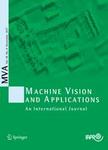版权所有:内蒙古大学图书馆 技术提供:维普资讯• 智图
内蒙古自治区呼和浩特市赛罕区大学西街235号 邮编: 010021

作者机构:Univ Duisburg Essen Networked Embedded Syst Schutzenbahn 70 D-45127 Essen Germany
出 版 物:《MACHINE VISION AND APPLICATIONS》 (计算机视觉与应用)
年 卷 期:2024年第35卷第4期
页 面:69-69页
核心收录:
学科分类:0808[工学-电气工程] 08[工学] 0812[工学-计算机科学与技术(可授工学、理学学位)]
基 金:Open Access Publication Fund of the University of Duisburg-Essen Bundesministerium fuer Wirtschaft und Energie as part of the TALAKO project [01MZ19002A]
主 题:Computer vision Electric vehicles Wireless charging Foreign object detection Machine learning
摘 要:Wireless charging of electric vehicles can be achieved by installing a transmitter coil into the ground and a receiver coil at the underbody of a vehicle. In order to charge efficiently, accurate alignment of the charging components must be accomplished, which can be achieved with a camera-based positioning system. Due to an air gap between both charging components, foreign objects can interfere with the charging process and pose potential hazards to the environment. Various foreign object detection systems have been developed with the motivation to increase the safety of wireless charging. In this paper, we propose a foreign object detection technique that utilizes the integrated camera of an embedded positioning system. Due to operation in an outdoor environment, we cannot determine the types of objects that may occur in advance. Accordingly, our approach achieves object-type independence by learning the features of the charging surface, to then classify anomalous regions as foreign objects. To examine the capability of detecting foreign objects, we evaluate our approach by conducting experiments with images depicting known and unknown object types. For the experiments, we use an image dataset recorded by a positioning camera of an operating wireless charging station in an outdoor environment, which we published alongside our research. As a benchmark system, we employ YOLOv8 (Jocher et al. in Ultralytics YOLO, 2023), a state-of-the-art neural network that has been used in various contexts for foreign object detection. While we acknowledge the performance of YOLOv8 for known object types, our approach achieves up to 18% higher precision and 46% higher detection success for unknown objects.